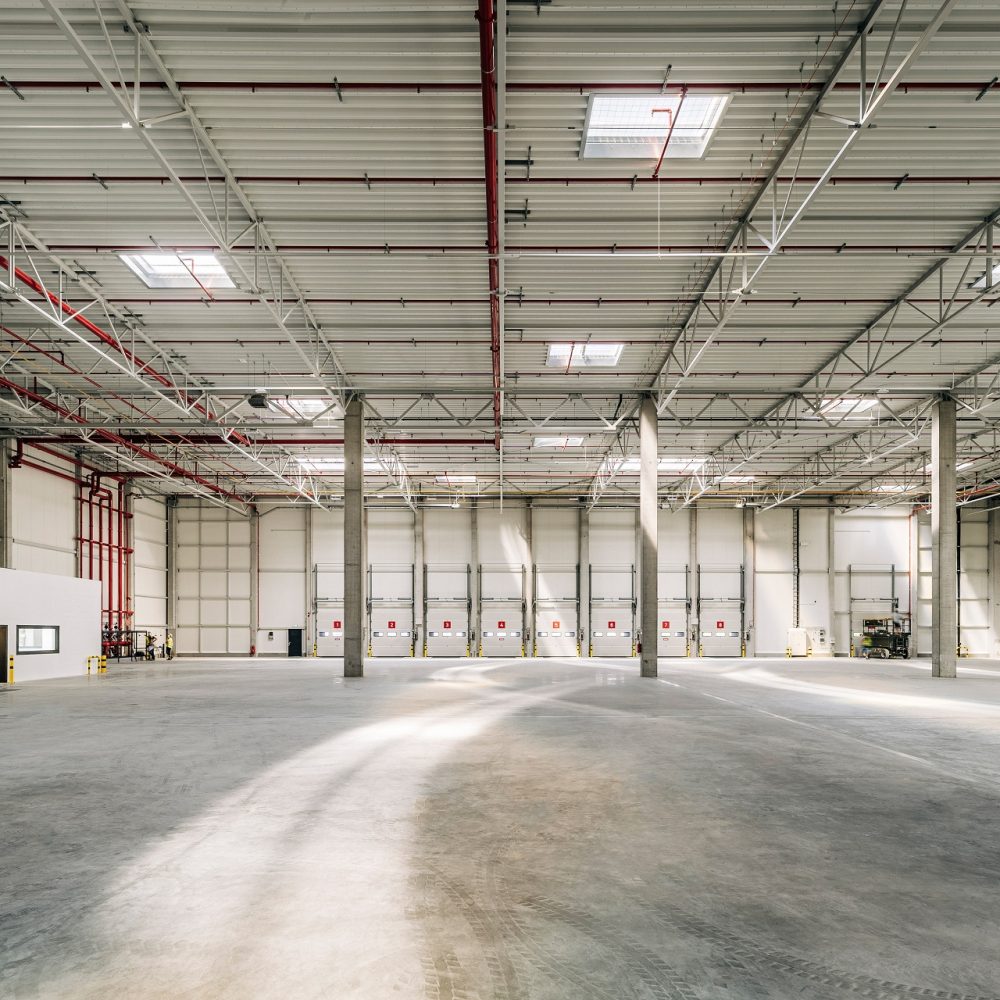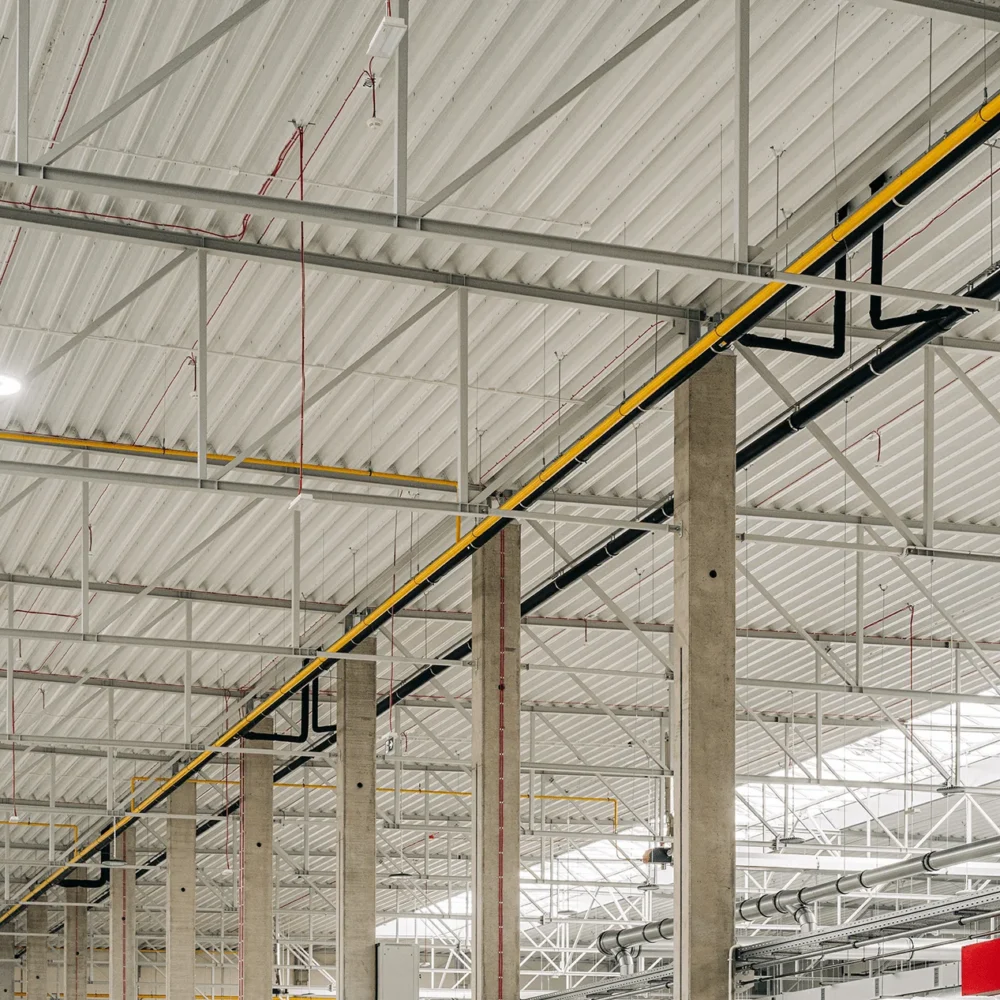
Hall design – factors influencing design solutions
Designing a steel hall is a laborious task that requires a great deal of knowledge and experience on the part of the designer. There is a number of factors that influence the design of a steel hall. These are aspects to which special attention should be paid before embarking on the project.
The primary factor that will influence the design of the hall is its purpose. Industrial construction, due to the wide range of industries, determines different types of hall design. Storage halls vary in height, which is determined by the height of the storage positions. A distinction is made between low-, medium- and high-bay halls. Industrial halls will vary in size and structural solutions depending on the industry. The design of the production hall will take into account the type of production involved (machine sizes, service platforms, internal transport). Logistics halls will require a large number of ramps and vehicle docks.
The shape and dimensions of the building plot, as well as the spatial development plan, can directly influence the limitations on the external dimensions of a building. The design of a hall on a narrow but long plot of land will differ from that for a large plot. The proximity of other buildings is also a factor that can influence the shape of the designed hall.
The hall design engineer must adopt a calculated static scheme. Steel halls are structures for which a planar, bar static scheme is sufficient. In most cases, these are single-aisle schemes. There are 3 basic static schemes (with rigid nodes, with girders supported on the columns in an articulated manner, with columns joined to the foundations). Each solution has its advantages and drawbacks, of course. The scheme with rigid nodes will be suitable for halls with cranes (especially those with high lifting capacity), where the rigidity of the structure expressed by the displacements of the tops of the columns and the deflections of the crane beams is important. Unfortunately, this solution is quite material-consuming which is compensated by the use of columns and rafters with converging webs.
The design of a long-span (column spacing) commercial building will rely on the second scheme. A truss girder is a load-bearing system that is supported on the columns in an articulated manner. Designing a full-wall girder (IPE, HEB, HEA) is uneconomical in this case. Frames with columns joined to the foundations in an articulated manner require smaller foundations than the others, but are not a good solution if the industrial hall is equipped with an overhead crane. Analogous solutions and connections will be referred to for multi-aisle halls.
A very important aspect affecting the design solutions is the transport inside the hall, which generates additional loads on the structure. These are often quite significant. The loads can be moved with overhead cranes, gantries and overhead hoists. Overhead cranes require the design of running beams (crane girders). For moving light loads, the beams are supported on column supports, and for high crane capacities, the columns of the main structure are designed as two-part columns (the column is extended up to the driving level of the crane). Of course, transport in the hall is possible without interference or connection to the supporting structure. This is when forklifts, conveyor belts or gantry cranes are used. On the other hand, it must be emphasised that, in these cases, the industrial hall must have a properly designed floor, taking into account additional transport impacts.
Another point to note is whether there are plans to expand the facility in the future. For the designer, this is important information influencing the design solutions adopted. If no extension is planned, then it makes economic sense to support the gable wall rafters with columns which will allow them to be made of smaller sections than all the internal rafters. If planning to add more frames, reducing the gable wall rafter will be difficult. The location of the roof bracing can be a complication. If they are located in the outmost roof area they may need to be relocated between the internal frames during an expansion. The last thing to pay attention to is fire regulations. The design of a production hall will include solutions adapted to different fire regulations (fire resistance class) than the design of a commercial building. This is related to the number of people who can be inside at any given time. The type and amount of materials that can get on fire also affects the fire classification of an industrial hall.
To conclude, there are many factors that significantly influence the hall design and the structural solutions adopted.



